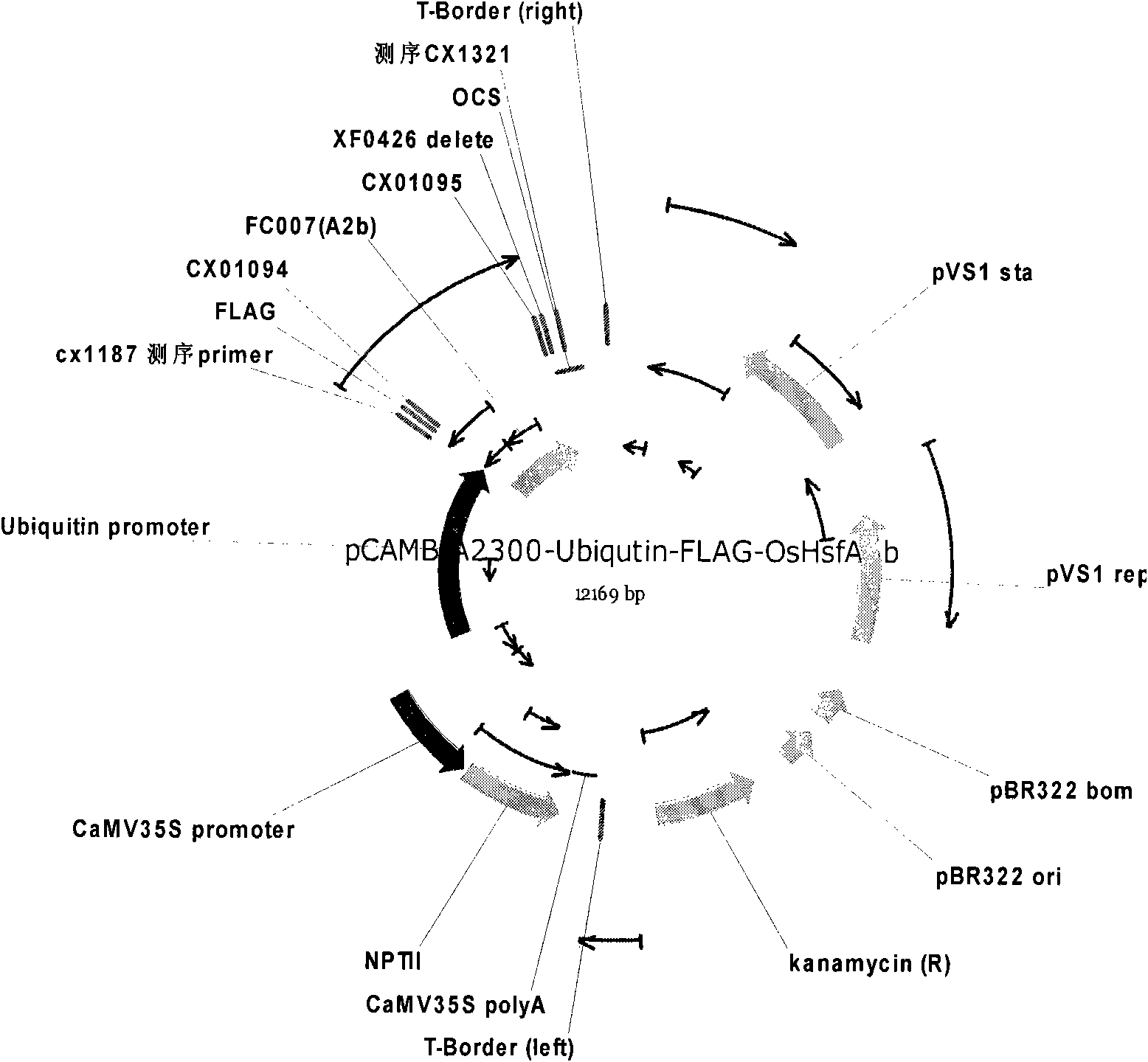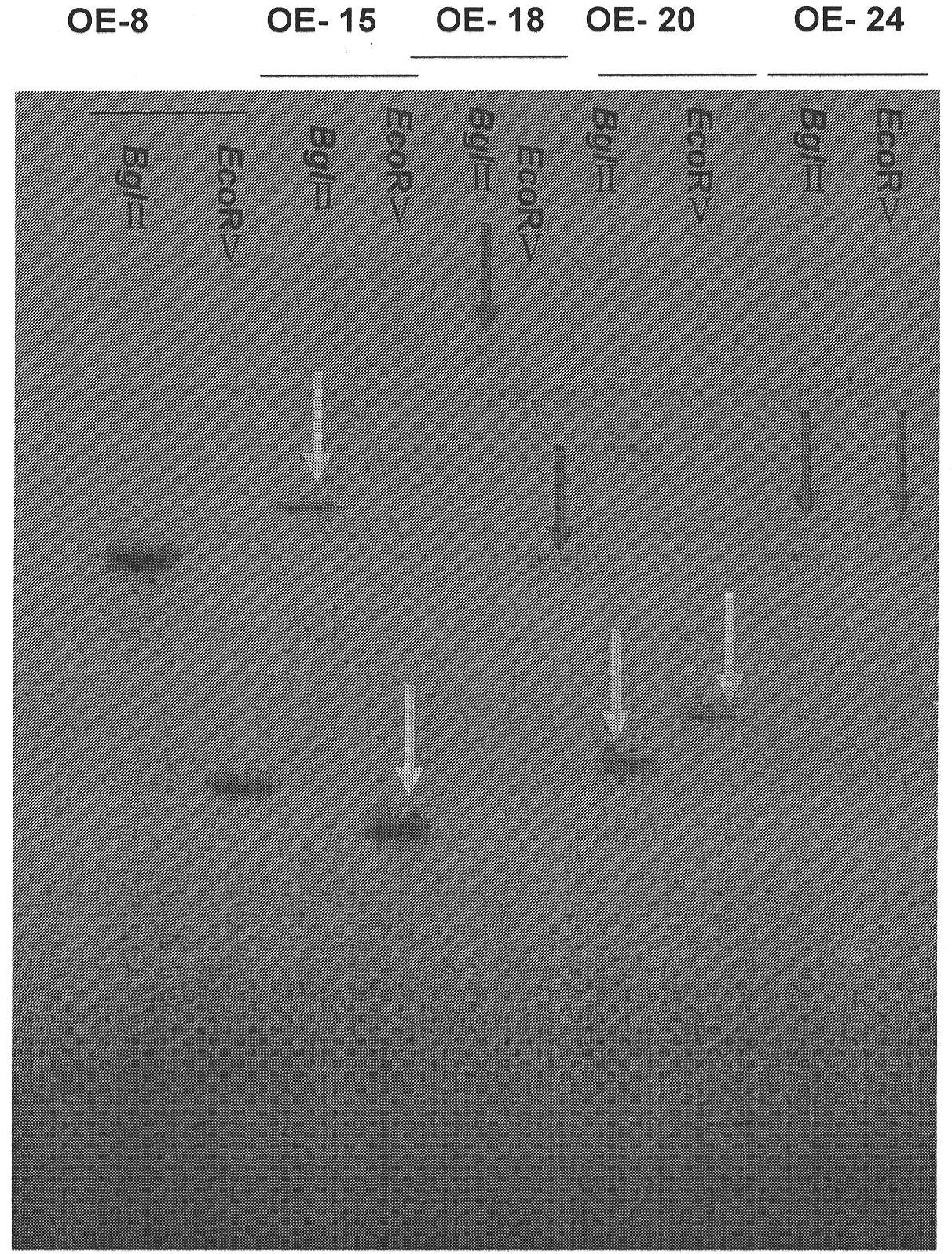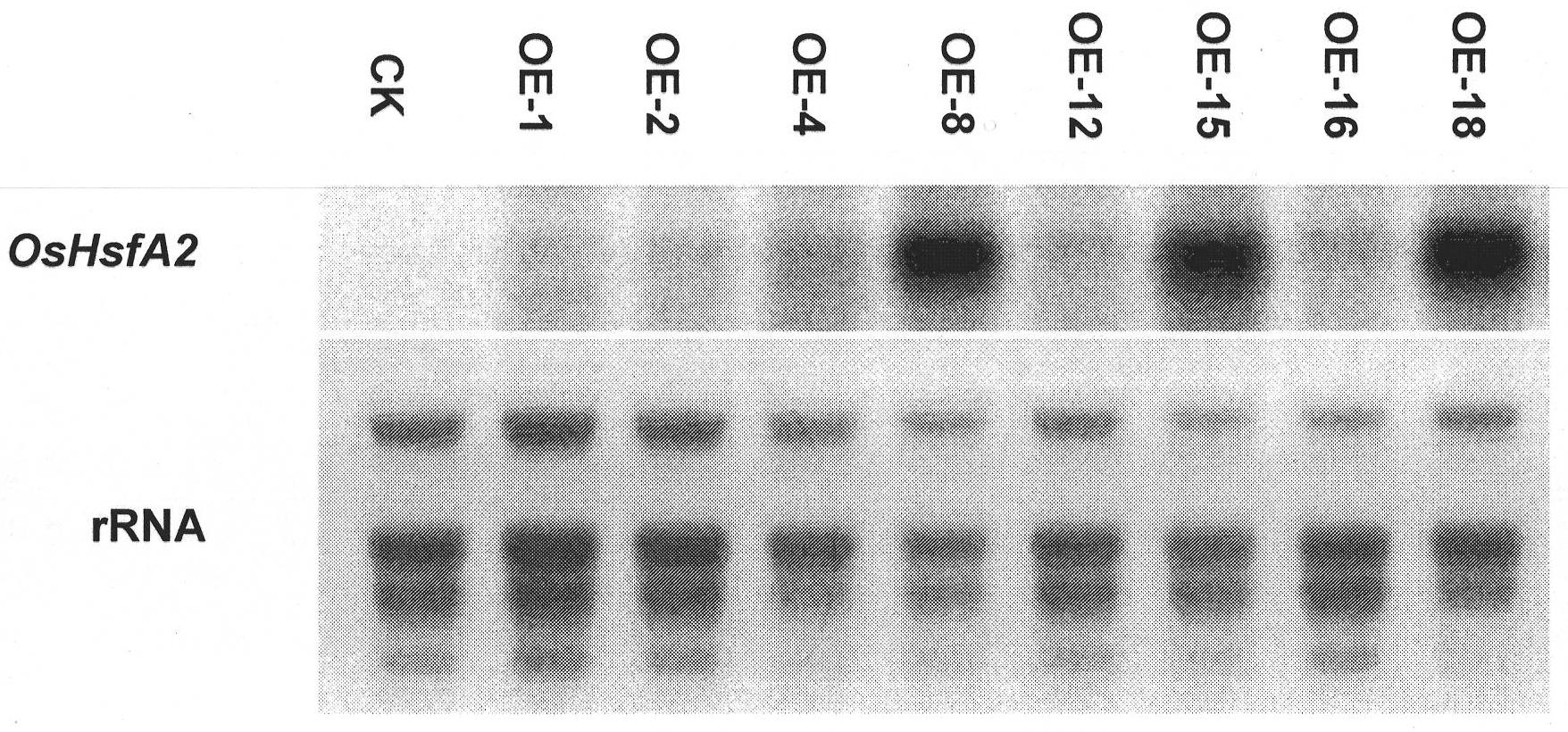Application of rice heat stress transcription factor in novel variety cultivation
A transcription factor and heat stress technology, applied in the field of plant breeding, can solve the problems of forced ripening under high temperature and sharp drop in yield
- Summary
- Abstract
- Description
- Claims
- Application Information
AI Technical Summary
Problems solved by technology
Method used
Image
Examples
Embodiment 1
[0028] Embodiment 1, the construction of plant expression vector
[0029] Using pCAMBIA1302-FLAG (XF0349) as a template, use the following primers to amplify the full-length fragment of FLAG, use KpnI and BamHI to singly cut the PCR product and pCAMBIA2302-Ubiqutin-ocs (XF0422), and ligate to obtain pCAMBIA2302-Ubiqutin after recovery - FLAG (XF0426) rice overexpression vector. The sequence containing FLAG after amplification: GGTACCATGGACTACAAGGACGATGATGACAAGGGCGACTATAAGGATGACGACGATAAGACTAGTCCCGGGACGCGTGGATCC
[0030] Using primers P1: 5'-GCGTCTAGA ATGGATGATCCAATGCTGAATGCG-3' and P2: 5'-ATAAGATTCTATTCCCCAGCCGTTGGGCCATT-3' (containing XbaI and BglII recognition sites) to amplify the corresponding osHsfA2b full-length cDNA gene from rice cDNA, using XbaI and BglII The vector XF0426 was digested, linked with T4 DNA ligase, and the ligated product was transformed into Escherichia coli JM109. Resistant colonies were screened on the corresponding resistance plate, and PCR identifi...
Embodiment 2
[0031] Embodiment 2, detection of transgenic plant strain Southern
[0032]The total DNA of the leaves of OsHsfA2b transgenic rice plants and non-transgenic rice plants cultivated at room temperature were extracted respectively, and a conserved sequence of OsHsfA2b DNA was selected as a probe, and rice genomic DNA was digested by BglII and EcoRV double enzymes. The Southern method was used to detect the number of OsHsfA2b gene inserted into the rice genome. The result is as figure 2 As shown, the number of insertions of the OsHsfA2b gene in the 5 different transgenic lines was all single copy.
Embodiment 3
[0033] Embodiment 3, transgenic plant strain Noutern detection
[0034] Total RNA was extracted from leaves of OsHsfA2b transgenic rice plants and non-transgenic rice plants cultured at room temperature, and a conserved sequence of OsHsfA2b DNA was selected as a probe to detect the expression of OsHsfA2b gene by Northern method. The result is as image 3 As shown, it shows that the OsHsfA2b gene expression level of some OsHsfA2b gene plants is significantly higher than that of non-transgenic plants at room temperature. image 3 Among them, the OsHsfA2b gene expression level of OE-8, OE-15 and OE-18 was significantly higher than that of the control wild-type Nipponbare (CK).
PUM
 Login to View More
Login to View More Abstract
Description
Claims
Application Information
 Login to View More
Login to View More - Generate Ideas
- Intellectual Property
- Life Sciences
- Materials
- Tech Scout
- Unparalleled Data Quality
- Higher Quality Content
- 60% Fewer Hallucinations
Browse by: Latest US Patents, China's latest patents, Technical Efficacy Thesaurus, Application Domain, Technology Topic, Popular Technical Reports.
© 2025 PatSnap. All rights reserved.Legal|Privacy policy|Modern Slavery Act Transparency Statement|Sitemap|About US| Contact US: help@patsnap.com



